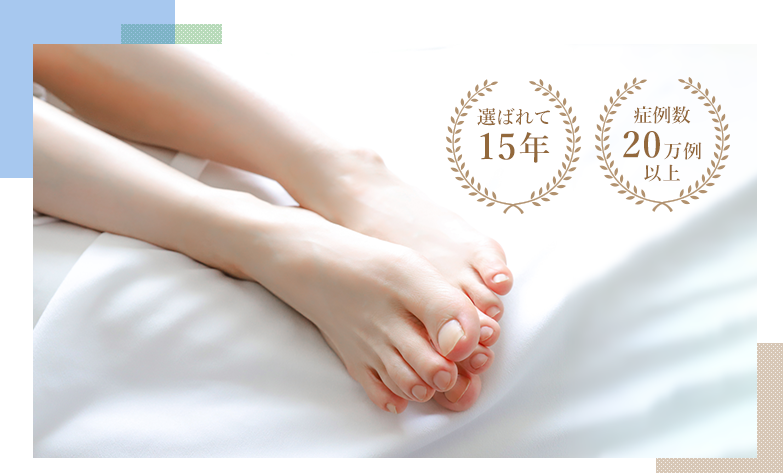Recommended Clinics for Ingrown Nail Treatment in Fukuoka and Sapporo
Wiki Article

Ingrown nails, medically known as onychocryptosis, are a common yet painful condition where the edge of the nail grows into the surrounding skin, often affecting the big toe. In Japan, with its emphasis on preventive healthcare and advanced dermatological techniques, treatments range from non-invasive corrections to surgical interventions. As of 2025, urban centers like Fukuoka and Sapporo offer specialized clinics blending traditional wire methods with modern phenol cauterization.
Fukuoka, a gateway to Kyushu's dynamic lifestyle, sees high demand due to its active population, while Sapporo's cold climate exacerbates foot issues from tight winter boots. This article explores causes, treatments, and top-recommended clinics in both cities, empowering readers to seek timely relief. With over 220 clinics in Fukuoka and 159 in Sapporo handling ingrown nails, options abound for effective care.
Understanding Ingrown Nails
Causes and Symptoms
Ingrown nails typically arise from improper nail trimming, where edges are cut too short or rounded, causing the nail to curve inward. Other culprits include tight footwear, trauma, fungal infections, and genetic predispositions like curved nails. In Japan's humid summers and snowy winters, sweat and pressure from shoes accelerate the issue, particularly in active demographics like hikers in Fukuoka's Ohori Park or Sapporo's ski enthusiasts.
Symptoms start subtly: redness and tenderness at the nail fold, progressing to swelling, pus, and throbbing pain. Untreated, infections can lead to granulomas or cellulitis, necessitating antibiotics. Early signs include difficulty walking, especially in Sapporo's icy streets. Dermatologists stress that 70% of cases affect the great toe, with recurrence rates dropping to under 5% with proper intervention.
General Treatment Options in Japan
Japan excels in conservative therapies before surgery. Home remedies include Epsom salt soaks (15-20 minutes daily) and cotton wicks to lift the nail edge, but professional care is advised for efficacy. Popular non-surgical methods feature the Sogawa technique, using stainless steel wire to realign nails painlessly, or VHO wire corrections certified by Japan's health ministry. For severe cases, partial matricectomy with phenol cauterization removes the ingrown portion under local anesthesia, boasting 95% success rates and minimal downtime.
Costs vary: initial consultations at ¥3,000-¥5,000, wire corrections ¥4,000-¥10,000 per toe, and surgery ¥10,000-¥30,000, often covered 70% by national health insurance for medically necessary cases. Clinics emphasize follow-ups to prevent regrowth, integrating laser therapy for hygiene in humid climates.
Top Recommended Clinics in Fukuoka
Fukuoka's clinics leverage its medical hub status, with dermatology and orthopedic specialists offering bilingual services for expats. In 2025, patient reviews on platforms like Caloo highlight quick appointments and innovative tools.
Kimura Sentaro Clinic: Expertise in Surgical Precision
Nestled in central Fukuoka, Kimura Sentaro Clinic stands out for its 25-year legacy in ingrown nail surgery, treating over 2,000 cases. Led by Dr. Sentaro Kimura, a board-certified surgeon, it specializes in partial nail avulsion with chemical matrix ablation, ensuring low recurrence. Patients praise the clinic's gentle local anesthesia and same-day discharge, with sessions lasting 20-30 minutes. Located at 2-1-1 Watanabe-dori, Chuo-ku, it's accessible via Tenjin Station. Fees start at ¥15,000 for surgery, with free consultations. Reviews note "life-changing relief for chronic pain," ideal for athletes.
Ashi to Shinzō Kekkan Clinic (Foot and Cardiovascular Clinic): Holistic Foot Care
This Rokubanmatsu-based facility excels in multidisciplinary approaches, combining podiatry with vascular checks to address underlying circulation issues common in Japan's aging population. Dr. Yamamoto's team uses Matiwire MD—a reinforced plate—for non-invasive corrections, effective for mild to moderate ingrown nails without skin damage. Open weekdays 9 AM-5 PM, it offers English pamphlets and parking. Initial treatment costs ¥7,000, including diagnostics. Caloo users rate it 4.8/5 for "compassionate, thorough care," especially for diabetic patients prone to complications.

Fukuoka Makizume Kyoseiin Kasiiin: Non-Surgical Specialists
In Higashi-ku, this dedicated correction institute avoids scalpels, employing proprietary braces for painless realignment over 1-3 months. Founded in 2015, it handles 500+ annual cases, focusing on pediatric and elderly clients. Address: 1-1-1 Kasii, Higashi-ku; contact via 092-123-4567. Treatments from 福岡巻き爪 札幌巻き爪 おすすめ ¥4,000, with 90% success in preventing surgery. Patients commend its "gentle, effective methods" on review sites, perfect for those wary of incisions.
Other notables include Yamauchi Clinic for affordable wire therapy and Yasuda Seikei Pain Clinic for integrated pain management, rounding out Fukuoka's top 10 per 2025 rankings.
Top Recommended Clinics in Sapporo
Sapporo's northern climate demands robust foot care, with clinics emphasizing infection prevention amid snow. Dermatology hubs dominate, per Caloo's 2025 listings, offering swift access via subway.
Hiraoka Hifuka Skin Care Clinic: Comprehensive Dermatology
In Kiyota-ku, this clinic shines for ingrown 福岡巻き爪 札幌巻き爪 おすすめ nail management alongside skincare, using phenol cauterization for recurrent cases. Dr. Hiraoka's protocol includes pre-treatment soaks and post-op laser disinfection, reducing healing to one week. Conveniently near Hiraoka Station, it operates 9 AM-6 PM, with ample parking for suburban patients. Surgery 福岡巻き爪 札幌巻き爪 おすすめ at ¥12,000; consultations ¥3,500. Yelp and Caloo reviews (4.7/5) highlight "expert handling of infected nails," suiting winter warriors.
Asabu Hifuka Clinic: Versatile Wire and Surgical Options
In Kita-ku, this facility offers both conservative wire methods and extractions under anesthesia, ideal for busy professionals. Dr. Asabu integrates nutritional advice to bolster nail health against Hokkaido's dry air. Open until 7 PM, at 1-2-3 Asabu; English support available. Treatments from ¥5,000, with insurance applicability. Caloo scores it 4.9/5 for "efficient, pain-free visits," a go-to for families.
Additional gems: Moriuchi Hifuka for pediatric focus, Takeda Skin Care for guidance on trimming, and Good Chiryo-in for salon-style corrections in Higashi-ku.
Prevention and Home Care Tips
Preventing ingrown nails is straightforward: Trim straight across, not rounded; wear breathable socks and fitted shoes; moisturize cuticles daily. In Fukuoka's humidity, antifungal powders help; in Sapporo, heated insoles combat frostbite risks. For at-home relief, apply over-the-counter tapes like those from Japan Trend Shop to lift edges gently. Regular podiatrist check-ups—biannual in high-risk groups—cut recurrence by 60%. Lifestyle tweaks, like alternating footwear, align with Japan's wellness ethos.
Step Towards Pain-Free Feet
Whether in Fukuoka's bustling streets or Sapporo's snowy trails, ingrown nails needn't sideline you. Clinics like Kimura Sentaro and Hiraoka Hifuka exemplify Japan's precision medicine, blending innovation with empathy for swift recoveries. In 2025, with rising awareness, seeking help early ensures mobility and comfort. Consult a specialist promptly—your feet will thank you as you explore these vibrant cities unencumbered.